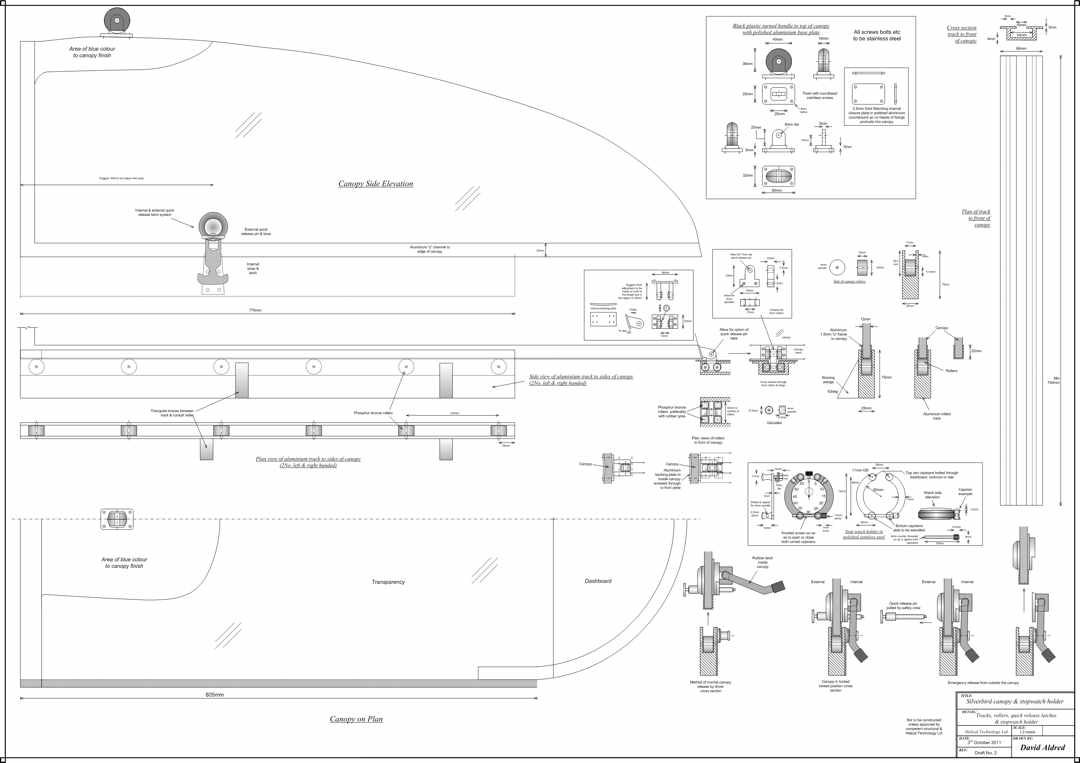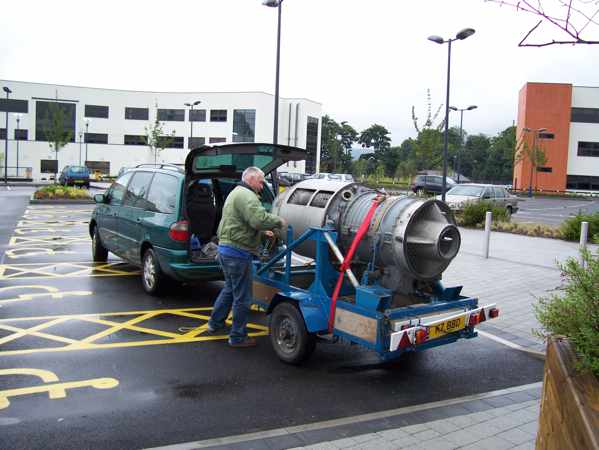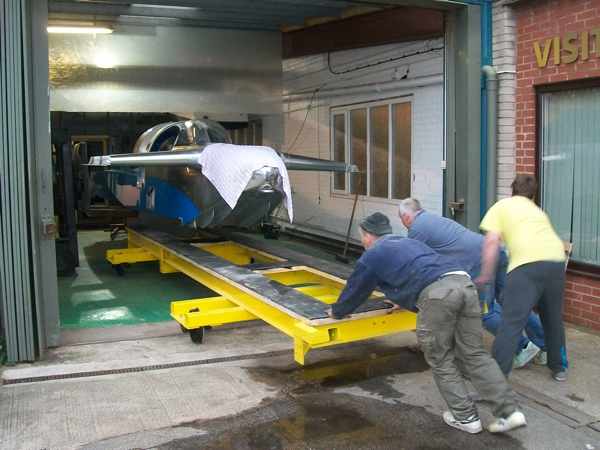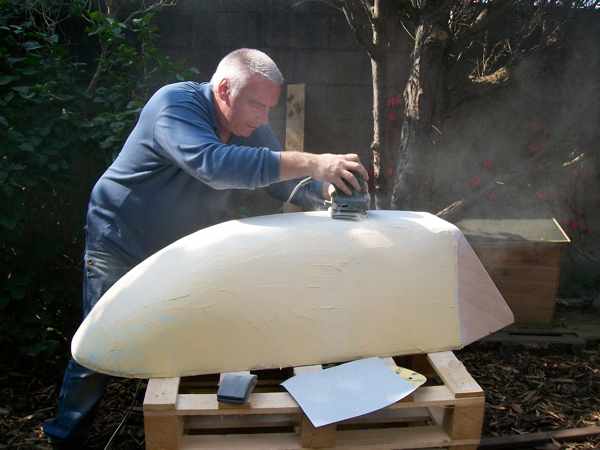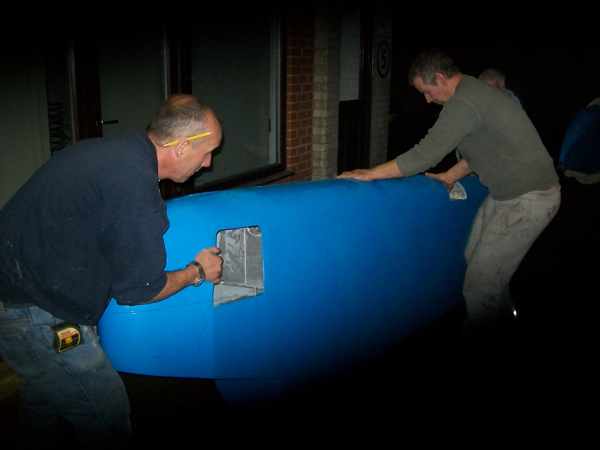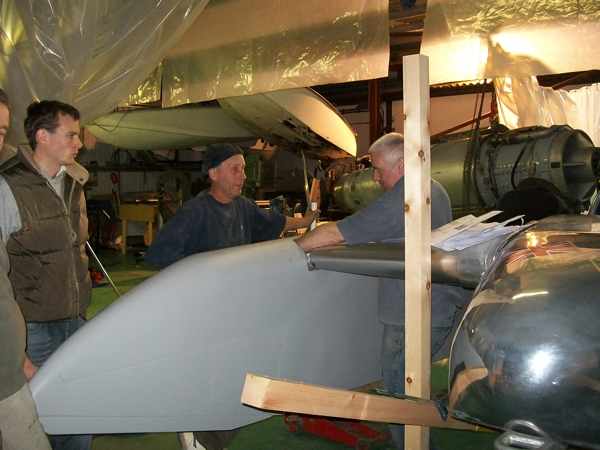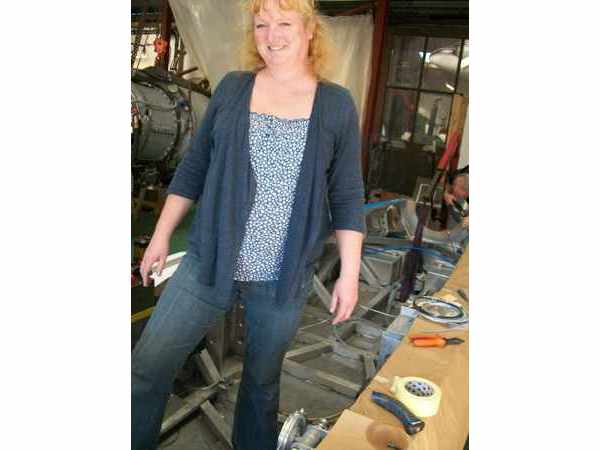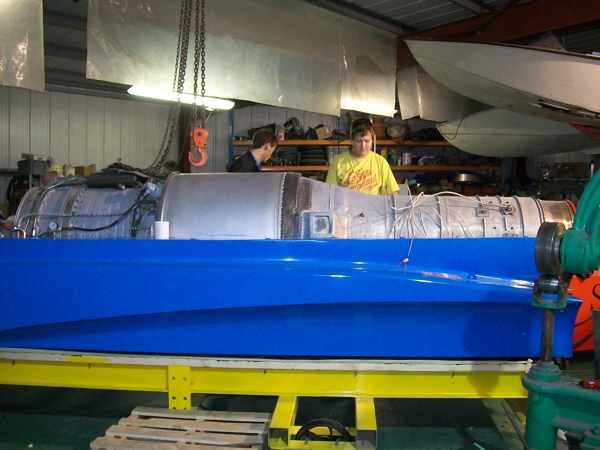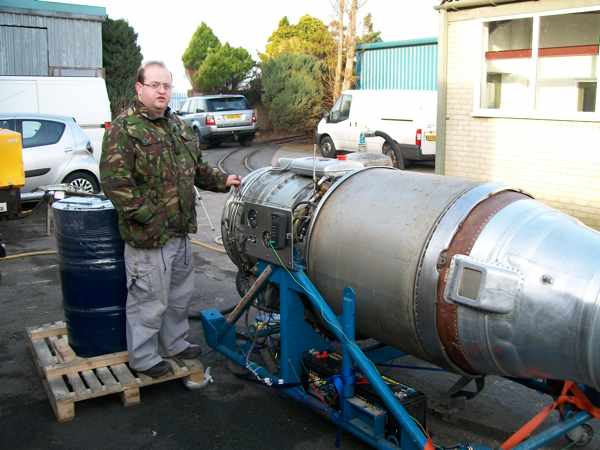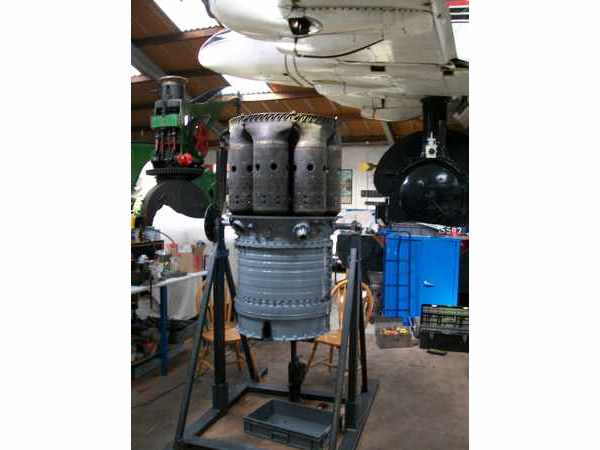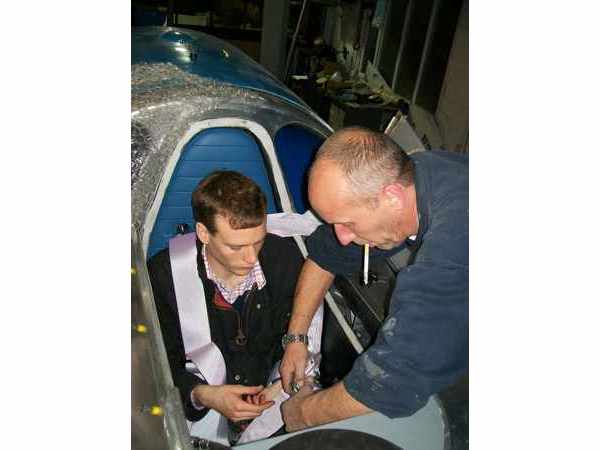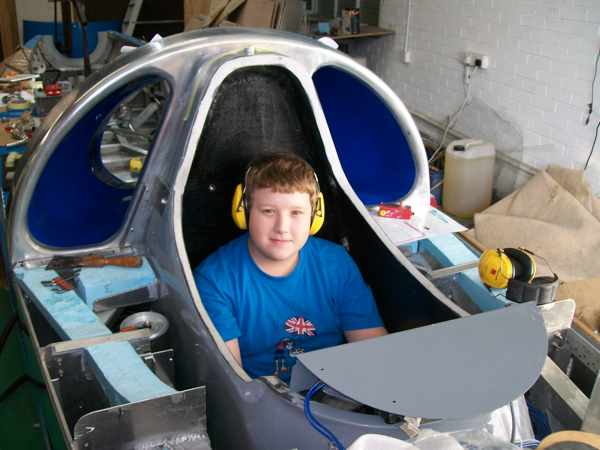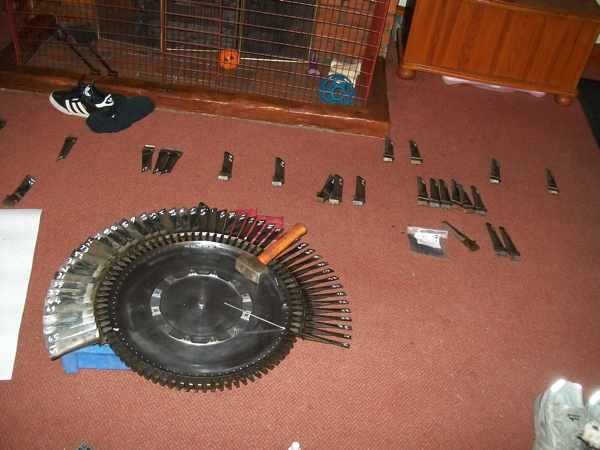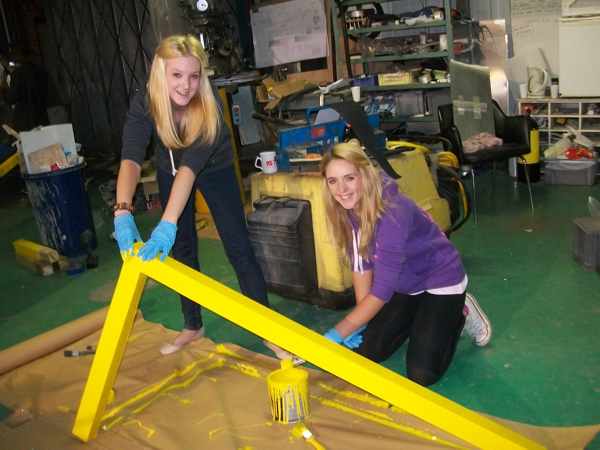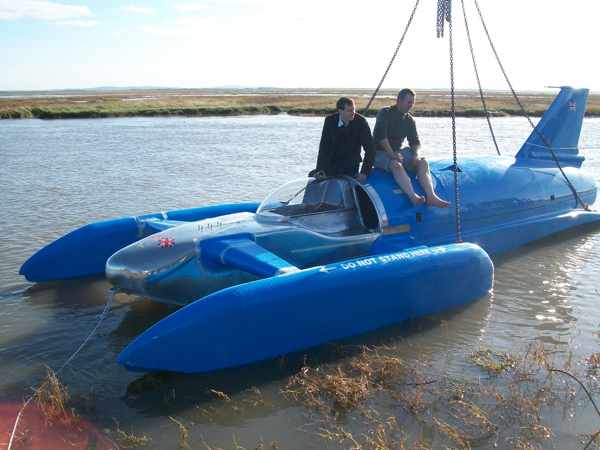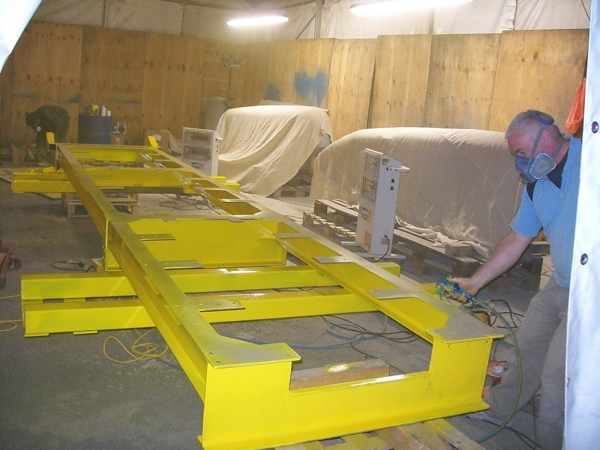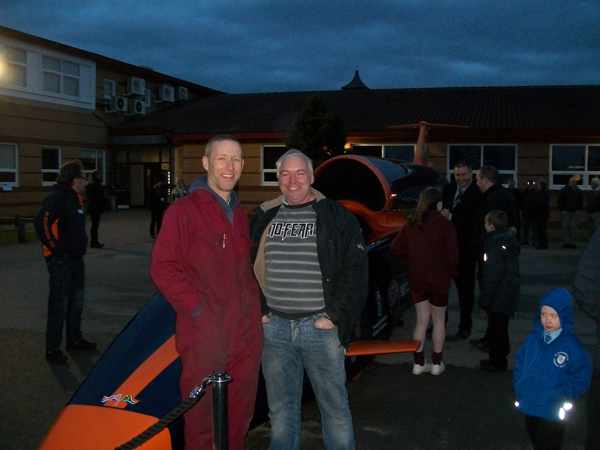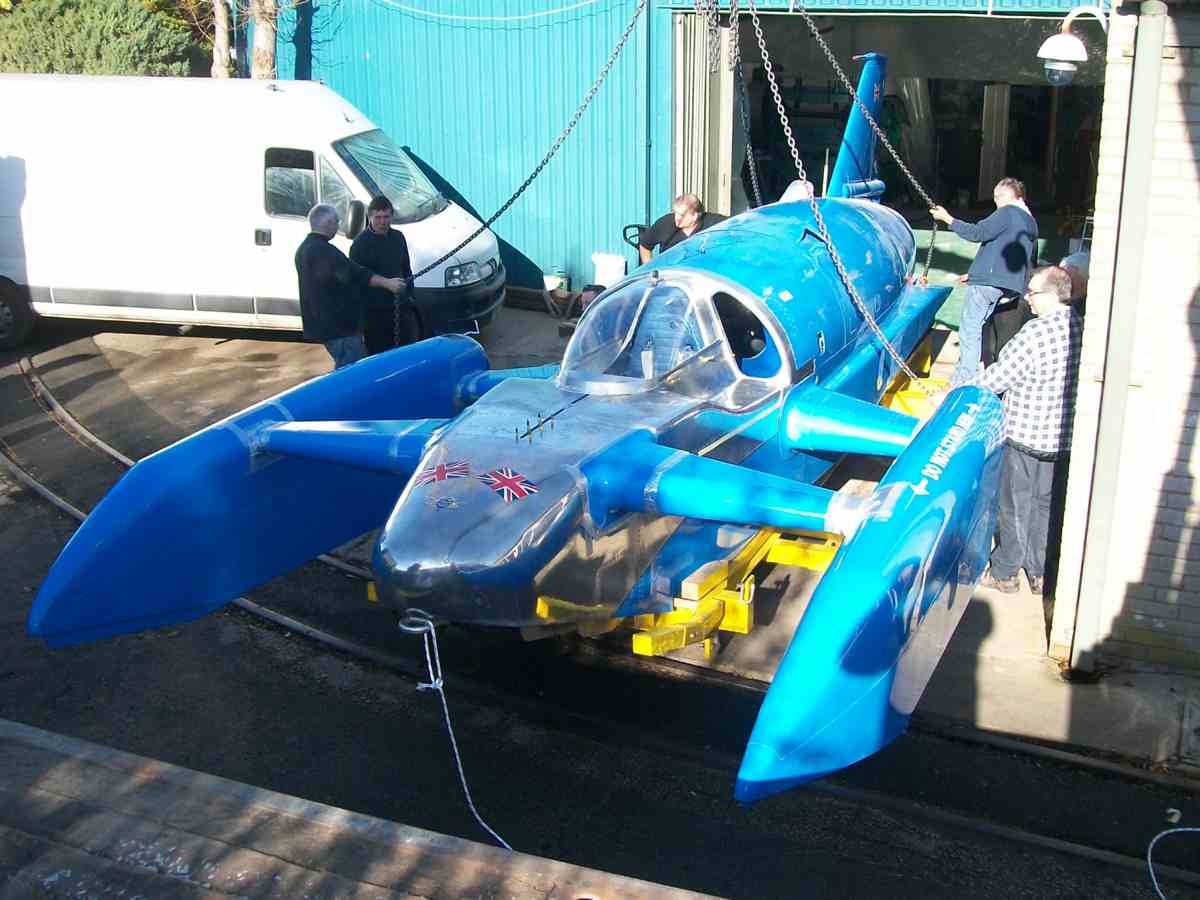
In 2008 David Aldred learnt of a loosely visual replica of Bluebird K7 in the early stages of being built relatively close to where he and Steve Hanson live. For much of the build she was called Silverbird due to the unpainted aluminium hull but would eventually be renamed K777 by its owners the Morris family of Helical Technology, an engineering firm in Lytham, Lancashire.
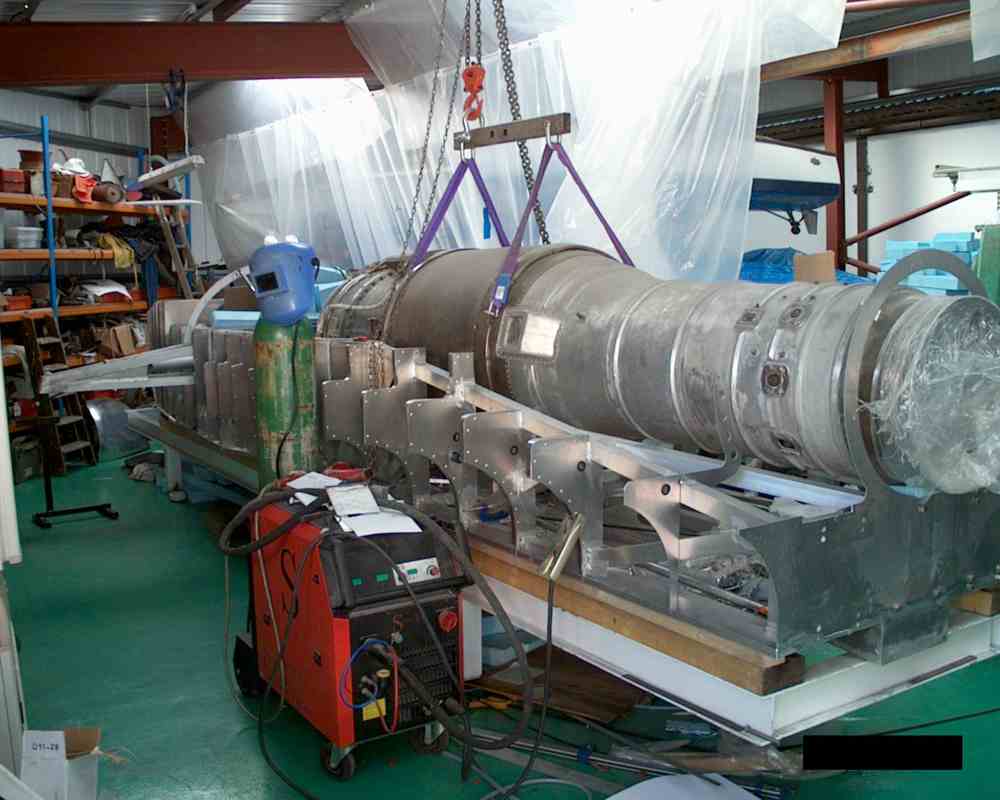
Silverbird / K777 during construction
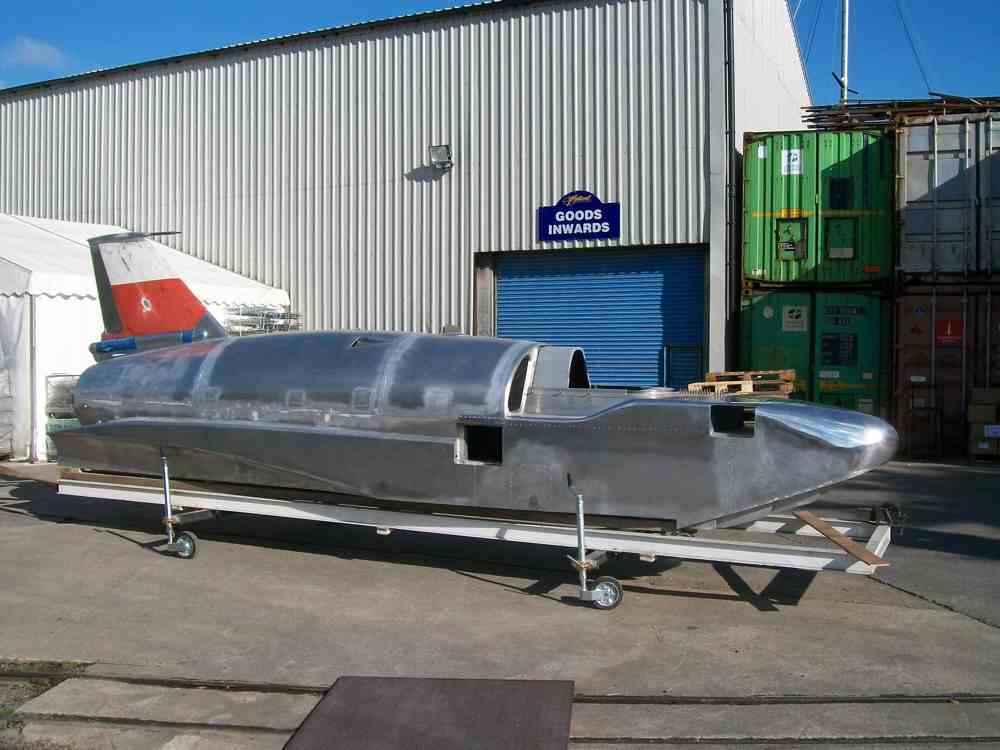
(Silverbird / later renamed the K777 nearing completion)
From 2008 through to the craft being run at Coniston Water in 2011, Keith Cowie, Alan Lewis, Steve Hanson, all mentioned previously, with friends gas turbine engineers Paul Davidson and Graham Pool all worked with sub contractor Dave Beatty of DBT Engineering in Preston to complete the craft.
Again it was long nights, weekends and days off for no reward other than being involved. Dave Beatty a craftsman in aluminium built the hull partly at his workshop in Preston and partly at Helical, whilst David sourced and purchased aged Orpheus jet engines which with the help of Graham and Paul we rebuilt including making one good engine out of a sectioned engine and salvageable parts from another. These engines were tested to full rpm and had more than enough thrust to get K777 onto the plane. There were a million and one jobs to attend to in completing the craft that can be discussed another time but she was floated for the first time in the creek behind Helical on 28th October 2011, only a week before she was taken to Coniston Records Week for maiden running trials there.
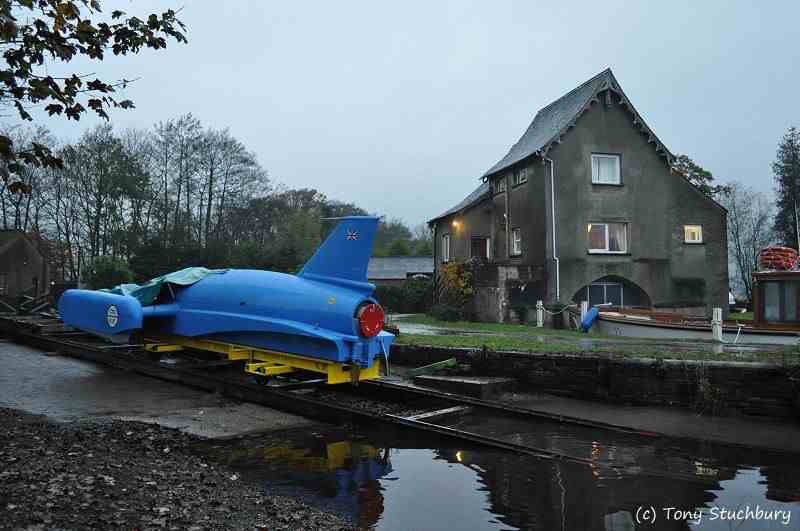
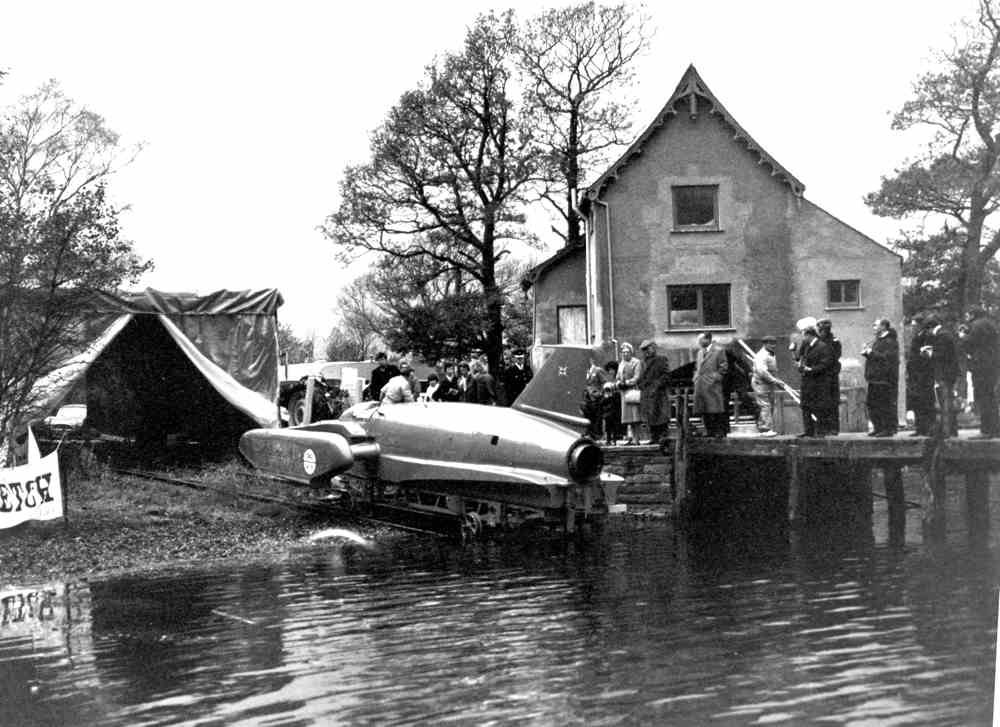
K777 (left) @ Pier Cottage, Coniston, where the original Bluebird K7 (right) was also launched from (Photos courtesy of Tony Stuchbury & Paul Allonby)
K777 (top) @ Pier Cottage, Coniston, where the original Bluebird K7 (bottom) was also launched from (Photos courtesy of Tony Stuchbury & Paul Allonby)
During those trials the craft experienced partial air intake failure to mirror that which Campbell and his team had experienced in 1966 at Coniston. After this issue was identified the intakes were strengthened.
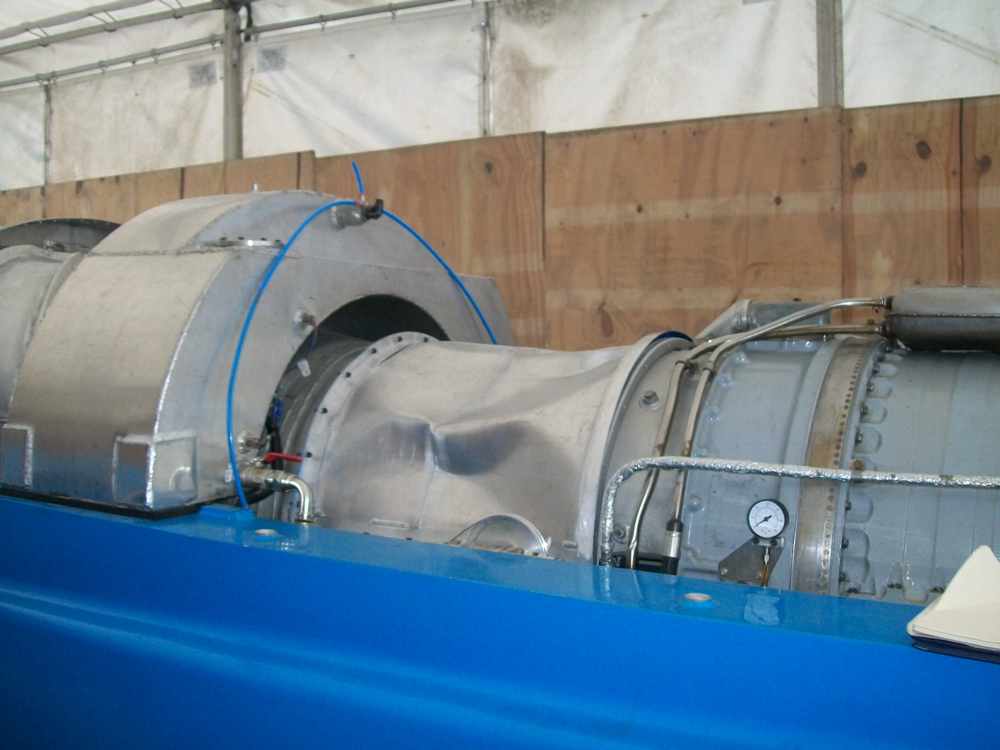
Collapsed air intakes on the K777 prior to strengthening
The K777 also suffered leakage from a compromised fairing which caused her to take on a considerable amount of water. Foam buoyancy the team had previously filled the sponsons and part of the hull with, kept her just about on the surface until additional floatation bags could be added and she was towed back to the jetty. To the credit of the entire team we all did a sterling job of working through the night, drying the boat, engine and systems down and getting her running again by the next day.
Following her time at Coniston David Aldred wrote the website for K777 which was later published for Helical along with his photos and video of the build.
The craft would later make a return visit to Coniston and following a request of Charles Morris he sent David Aldred up for a meeting in the Village Hall at Loch Ken to seek permission from the local representatives to bring and run K777 up there for further trials.
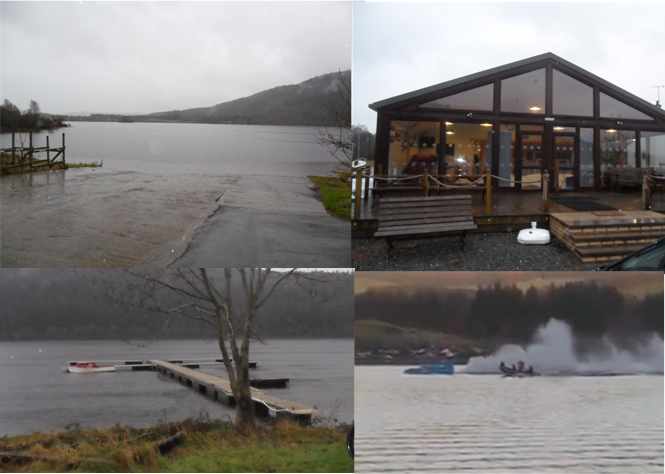
K777 undergoing further trials at Loch Ken in late 2014
However the results continued to be disappointing in that the driver was unable to get the craft to plane or travel beyond a few mph.
During the past 15 years David Aldred became very good friends with one of Ken Warby’s children, David given their mutual interest in jet hydroplanes and the Outright Water Speed Record. At one point there was talk of David coming over from Australia to drive K777 with both Davids building a jet hydroplane together, to challenge the existing record. In an e-mail to David Aldred dated 18th April 2008 Dave Warby suggested we call her Endeavour to signify our friendship by naming the craft after Captain Cooke’s ship.
In the end Helical chose Jim Noone to drive K777 and as a result David stayed in Australia to build his challenger, SOAII with his father Ken, which is now nearing completion.
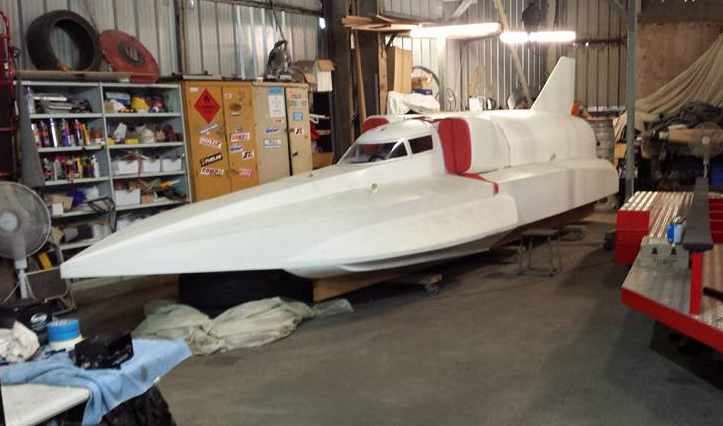
SOA ll nearing completion (courtesy of Dave Warby)
The K777 was built as a sight and sound experience for the Morris family and not as an Outright Water Speed Record challenger which is reflected in the many differences in construction between Bluebird K7 and K777. She was however interesting and fun to do at the time for those involved, from which much was learned and friendships gained.
Following on from that Charles Morris of Helical asked David Aldred to make enquires about sourcing a more powerful jet engine than the Orpheus to build another jet hydroplane and several types were considered including the large Speys that had recently been disposed of through the DSA when the Nimrod aircraft was retired from service.
It was during this time that serving military pilot Lt. David-John Gibbs made contact with David expressing an interest not only to assist where he could but also to drive a jet hydroplane. From that friendship we have purchased an appropriate jet engine to proceed with a build and now that and the driver capsule buck are within our workshop, the team are ready to proceed in constructing our next jet hydroplane – Longbow.
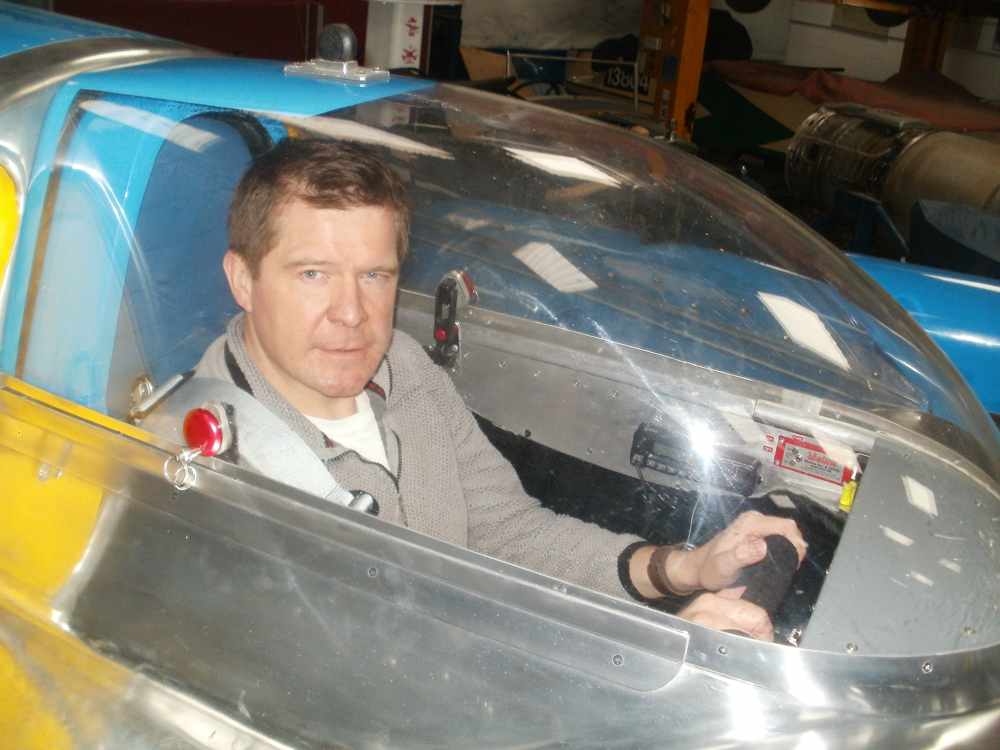
Lt. David-John Gibbs in the cockpit of K777
